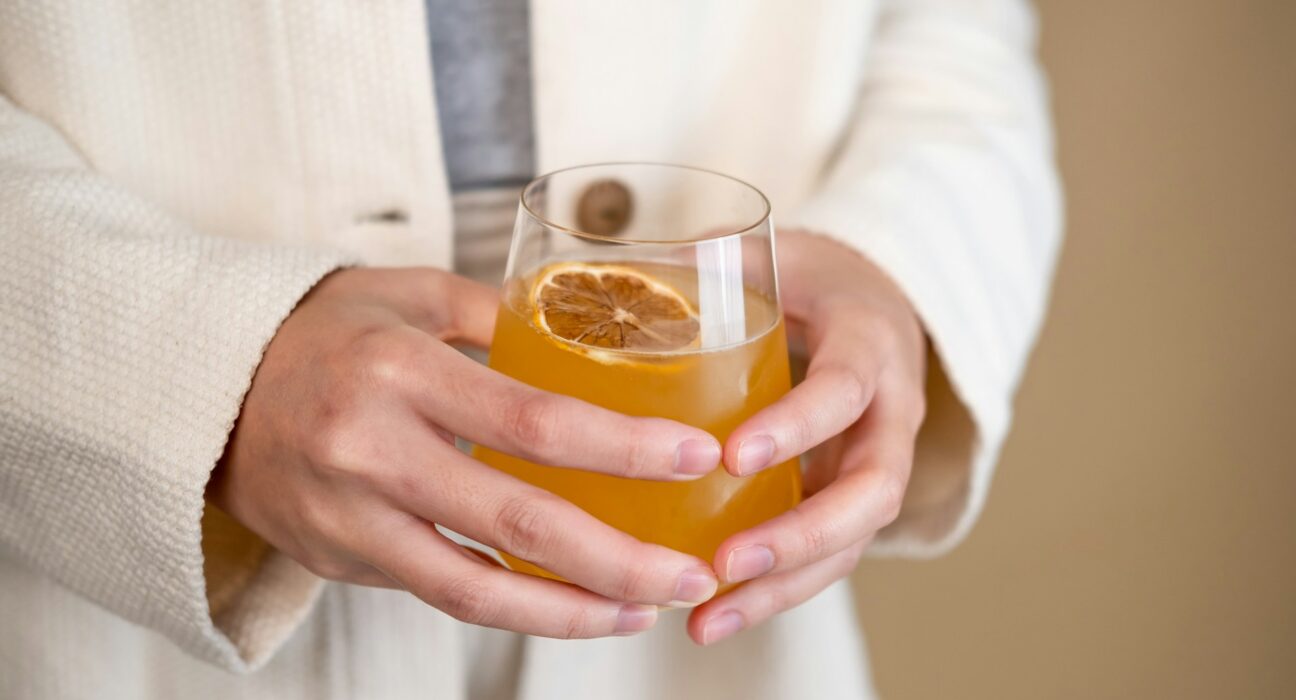Getting kids to drink anything healthy can feel like an uphill battle. Between sugary sodas and artificially flavored juices, convincing your little ones to sip on something good for them requires creativity. Enter the wonderful world of homemade kombucha—a fizzy, flavorful drink that supports gut health while tasting like a special treat.
Unlike store-bought versions that can be expensive and unpredictable in flavor, making your fermented tea at home allows you to control both taste and sugar content. You can create mild, kid-approved flavors that pack all the probiotic benefits without the sharp tang that often puts children off commercial varieties.
The beauty of brewing your own lies in customization. Want something that tastes like fruit punch? You can do that. Prefer a flavor reminiscent of ginger ale? That’s possible too. By starting with a gentle base and adding natural fruit flavors, you’ll create family drinks that everyone wants to drink.
This guide will walk you through simple recipes and techniques that transform ordinary tea into extraordinary beverages your kids will request by name. From tropical fruit blends to familiar berry flavors, these recipes prove that healthy drinks don’t have to taste like medicine.
Getting Started: The Foundation for Success
Building Your Base Brew
Creating great homemade kombucha begins with a solid foundation. Your base recipe should be milder than typical adult versions, using less tea and slightly more sugar to create a gentler flavor profile that appeals to younger palates.
Start with a mixture of black and green tea—about 75% black tea and 25% green tea works well for beginners. This combination provides the nutrients your SCOBY needs while creating a less bitter base than pure black tea. Steep your tea for only 10-12 minutes instead of the usual 15, which reduces tannins and creates a smoother taste.
The sugar content in your initial brew matters significantly for the final product. While the fermentation process consumes most of the sugar, starting with the right amount ensures proper fermentation while leaving just enough sweetness to appeal to kids. Use organic cane sugar when possible, as it ferments more predictably than processed alternatives.
Creating the Perfect Environment
Temperature control makes the difference between successful fermentation and disappointing results. Keep your brewing vessel in a spot that maintains 68-78°F consistently. Cooler temperatures slow fermentation dramatically, while excessive heat can damage the beneficial bacteria you’re trying to cultivate.
Your fermentation container should be glass, not plastic or metal, which can interfere with the process. A wide-mouth jar makes monitoring easier and allows for better airflow. Cover with a coffee filter or cloth secured with a rubber band—this keeps dust and insects out while allowing the brew to breathe properly.
Fruit-Forward Flavors That Win Every Time
Tropical Paradise Blend
This recipe transforms plain fermented tea into something that tastes like a vacation in a glass. The combination of pineapple and mango creates natural sweetness while adding vitamin C and digestive enzymes that complement the probiotic benefits.
For each 16-ounce bottle, add 2 tablespoons of fresh pineapple juice and 1 tablespoon of mango puree during the second fermentation. Fresh fruit works better than juice concentrate because it provides natural sugars that create better carbonation. Let this mixture ferment for 2-3 days at room temperature before refrigerating.
The tropical flavors mask any remaining tartness from the tea base while providing familiar tastes that most children already enjoy. This variety often becomes a gateway flavor that helps kids develop a taste for more adventurous combinations later.
Berry Medley Magic
Berries offer natural antioxidants alongside appealing colors that make drinks more visually interesting to young drinkers. Mixed berry combinations work particularly well because they balance sweet and tart notes naturally.
Combine 1 tablespoon each of strawberry, blueberry, and raspberry puree per 16-ounce bottle. Frozen berries work excellently for this purpose—thaw them completely and mash gently to release juices without creating too much pulp. The natural sugars in berries promote good carbonation while adding vibrant colors that kids love.
This combination creates a drink that resembles fruit punch but delivers probiotics and beneficial compounds from the berries. The familiar flavor profile makes it an easy sell to skeptical children.
Classic Flavors with a Healthy Twist
Ginger Lime Refresher
Ginger provides natural digestive benefits that complement the gut health properties of fermented tea. However, raw ginger can be too intense for children, so this recipe uses a gentler approach that maintains flavor while reducing bite.
Create ginger syrup by simmering 2 inches of fresh ginger root (sliced thin) in 1 cup of water with 2 tablespoons of sugar for 10 minutes. Strain and cool completely. Use 1 teaspoon of this syrup plus 1 teaspoon of fresh lime juice per 16-ounce bottle during the second fermentation.
The lime brightens the overall flavor and adds vitamin C, while the ginger syrup provides warmth without overwhelming heat. This combination often appeals to kids who enjoy ginger ale, offering a healthier alternative with similar flavor notes.
Apple Cinnamon Comfort
This warming combination evokes familiar fall flavors while providing comfort and nutrition. Apple juice adds natural sweetness and familiar taste, while cinnamon contributes antioxidants and creates an appealing aroma.
Use 2 tablespoons of pure apple juice (not cocktail) and a pinch of ground cinnamon per bottle. The cinnamon should be barely detectable—just enough to add warmth without creating spiciness. This combination works especially well during cooler months when warm, comforting flavors appeal more than tropical options.
The apple provides natural sugars for carbonation while, the cinnamon adds complexity that makes this feel like a special treat rather than a health drink.
Making It Fun: Presentation and Involvement
Getting Kids Involved in the Process
Children are more likely to drink something they helped create. Involve them in safe parts of the brewing process, such as measuring fruit purees, choosing flavor combinations, and monitoring fermentation progress.
Create a fermentation chart where kids can track bubbles and taste changes over time. This turns brewing into a science experiment that builds excitement about the final product. Let them name their favorite flavor combinations—ownership increases enthusiasm dramatically.
Teaching children about fermentation and gut health in age-appropriate ways helps them understand why these family drinks benefit their bodies. Simple explanations about “good bacteria” and “helping your tummy feel good” make the health aspects relatable without being overwhelming.
Creative Serving Ideas
Presentation significantly impacts how children perceive new foods and drinks. Serve homemade kombucha in special glasses or bottles that make the experience feel special. Adding colorful straws or fun ice cubes increases appeal without adding calories or artificial ingredients.
Consider creating “flight” tastings with small samples of different flavors, allowing kids to compare and contrast various options. This approach often leads to discovering new favorites while making the experience interactive and engaging.
Troubleshooting Common Challenges
Managing Tartness Levels
If your homemade kombucha turns out too tart for young taste buds, several adjustments can help. Shorter fermentation times create milder flavors—try reducing your first fermentation by 1-2 days. Adding more fruit during the second fermentation also balances acidity naturally.
Another approach involves diluting the finished brew with filtered water or fruit juice just before serving. This reduces both tartness and alcohol content (which should be minimal in properly made versions anyway) while maintaining probiotic benefits.
Achieving Proper Carbonation
Consistent carbonation can be tricky, but it makes a huge difference in appeal. Ensure your bottles seal tightly and leave about an inch of headspace for gas expansion. Room temperature second fermentation for 2-4 days typically creates good fizz, but timing varies with temperature and sugar content.
If carbonation seems weak, try adding a tiny pinch of sugar to each bottle before sealing. This provides extra fuel for carbonation-producing fermentation. Always check bottles daily and refrigerate when carbonation reaches desired levels to prevent over-fermentation.
Your Path to Healthier Family Drinks
Creating homemade kombucha that kids enjoy requires patience and experimentation, but the results are worth the effort. These naturally fermented beverages offer genuine health benefits while satisfying the desire for something fizzy and flavorful.
Start with one or two simple recipes and gradually expand your repertoire based on your family’s preferences. Keep notes about what works and what doesn’t—successful flavor combinations can be repeated and refined over time.
Remember that developing a taste for these healthy alternatives takes time. Don’t be discouraged if initial reactions aren’t enthusiastic. Often, the third or fourth exposure creates acceptance and eventual preference over commercial alternatives.
The investment in time and ingredients pays dividends in both health benefits and family bonding. Creating these special drinks together builds memories while establishing healthy habits that can last a lifetime.







